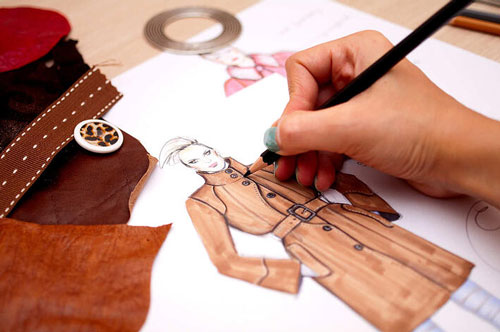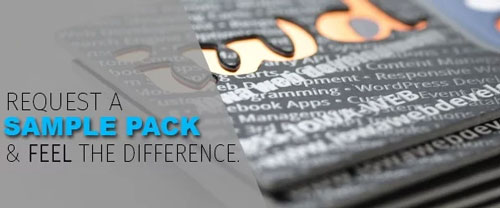Fashion is a very competitive field, especially for someone who is just starting out. This is why, if you are interested in breaking into the business, it is important to have a strong professional portfolio that you can present to potential clients and employers.
How to Build a Fashion Marketing Portfolio
The benefits of having a memorable fashion marketing portfolio are numberous, but most importantly, the goal is to stand out from the competition and really impress potential employers and clients. Don’t worry; we’re here with the top tips to get your portfolio where it needs to be. Check out these tips:
Make your portfolio user-friendly.
It should be reasonably easy for anyone to get through the contents. Have the main page as an introduction to your work that includes your resume followed by all of your individual sections and designs. If it is an online portfolio, have the main page as an introduction that has a link to your resume, a clear navigation and thumbnails that link to the larger versions of your designs.
Underscore your professional ability by including business and marketing plans.
Fashion is a fun and creative field, which makes the marketing just as fun and creative. However, it’s still important to be able to get down to the nitty gritty on the business side of things. Your fashion portfolio would be incomplete if you didn’t include a business or marketing plan outlining the key initial campaigns to take your merchandise to the next level. You can very easily find a business plan template online, and your marketing plan should highlight some of the main strategies you intend to use when connecting with potential customers.
Related: 9 Sure-Fire Tips for Marketing a Designer Clothing Line
With that said, your marketing campaign should also identify the clothing line’s target demographics and ideal customer (or buyer persona). Along with the nitty gritty details such as segmentation and market research, be sure to include a lot of visuals so that your information really pops!
Display your own online marketing efforts.
Anyone reviewing your portfolio will want you to put your money where your mouth is. This means providing details on past campaigns you’ve worked on. If you haven’t yet landed a big job, put your own fashion-related accounts in this section. It’s extremely important to have written and published fashion articles, even if it’s just on your own blog, to illustrate that you have copywriting chops. Be sure to have an active social media presence as well because fashion marketing is influenced a lot by the online world!
Keep up with current trends.
Even if the work in your portfolio is strong, your brand can negatively be affected if it is outdated. Make sure that you keep up with the current fashions so that your portfolio is always up-to-date. Read fashion magazines regularly and watch current fashion shows so that you can better develop your portfolio accordingly with contemporary pictures. Trend boards are a great way to showcase your ability to identify cultural touch points and predict future trends. It’s important to include a lot of visual inspiration here, and don’t be afraid to include some texture too!
Showcase your branding ability throughout.
One huge aspect of fashion marketing is the ability to create an awesome brand whether it’s for yourself or for the particular line you’re working on. One of the best ways to do this is through the branding of the portfolio itself. It should act as a cohesive set of materials that shows your specific eye for fashion.
Your portfolio should reflect a personalized theme throughout that can be seen to some extent in all of the text and photographs. For example, if your merchandising taste involves pastel colors and more traditional clothes, include these types of pictures throughout your portfolio. If you choose a niche in fashion and demonstrate your expertise of that niche through the materials of your fashion marketing portfolio, you can set your brand apart and start to develop a distinctive reputation in the industry.

Another way to showcase your branding ability is by including any hang tags for brands you have established. If you have not yet worked on someone’s line, don’t be afraid to create custom hang tags for brands that you’ve invented as an example. These are important not just for your portfolio but also because they will help you establish your brand in another way and make what you have to offer more distinctly recognizable in the industry.
Related: How to Broadcast Your Powerful Product Line With Hang Tags
Your photography and graphic design should stun.
Include logos you’ve developed, photo shoots you’ve completed, magazine layouts you’ve created or websites you’ve designed. The graphic design and photography related to the layout of the portfolio itself should also be top-notch, illustrating that you take the same care and attention to detail in every aspect of your career.
Take inspiration from industry magazines and professionals you look up to in the field. Don’t just add a candid shot of your college roommate; everything you include should enhance the image you’re trying to portray of yourself, so it’s important that you select them with care.
Edit your portfolio thoroughly.
Most portfolios combine visual and written elements, and all of the elements of your portfolio should be as flawless as possible in order to give you the best advantage possible. These portfolios include pictures of work, reasons that explain the fashion choices in these pictures, biographical texts about experiences that are relevant, and reflections of the work on the fields of merchandising and fashion. Clients and employers may perceive you negatively if there are errors in any component of your portfolio. Make sure that all of the spelling and grammar in the text of your portfolio is error-free and that all of the photographs are representative of your brand and make it look good.
Tailor your portfolio as you go.
Before you meet with a potential client or employer, make sure that you do the appropriate research on their requirements and make the appropriate adjustments to your portfolio. Try to adjust it so that the work that you are displaying is representative of the work that you could be doing for them. You are trying to show them that you are a good fit for them.
Use high-quality printed materials.
If your fashion marketing portfolio needs to be physically printed, SilkCards has the capability to really take it to the next level. If you’re dreaming of texture or foiled accents or really any other design element, we’re able to make it a reality. We also do hang tags. Contact our design team to see how we can help or request a free sample pack to see what we offer.


